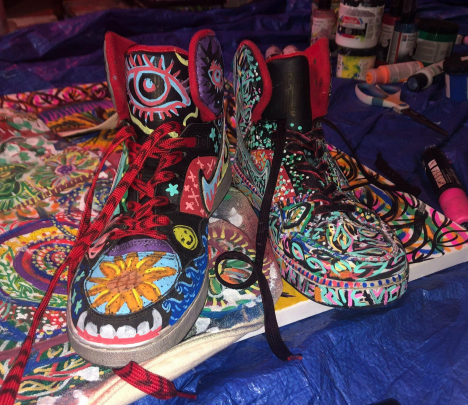A Practical Playbook to Combat Fast Fashion: Shop Smarter, Wear Longer, Waste Less

Why Combating Fast Fashion Matters
Fast fashion fuels overproduction, short product lifecycles, and rising waste. You can reduce your footprint by shifting to circular habits-buying secondhand, repairing, and choosing durable, ethical pieces-while signaling demand for better practices across the industry [1] . Consumer pressure, alongside policy and brand action, is a critical lever for change [1] .
1) Buy Less, Choose Well: Build a Capsule Wardrobe
Reducing impulse purchases is the most powerful step. A capsule wardrobe focuses on versatile, high‑quality essentials that mix and match for many outfits. Durable fabric, strong stitching, and timeless cuts extend wear and reduce replacements. This shifts consumption from trend‑driven cycles to quality that lasts, a core principle of slow fashion [2] . Sustainable fashion emphasizes lower resource use and less waste across materials and production, reinforcing the value of fewer, better items [2] .
How to implement :
- Audit your closet for gaps; list essentials you actually need.
- Prioritize natural or recycled fibers where possible and inspect seams, buttons, and hems before buying.
- Track cost-per-wear; aim for items you can style at least five ways.
Example : Choosing a high‑quality tee and trousers you wear weekly will typically outlast multiple trend purchases, lowering waste and total spend over time [2] .
Challenges and solutions :
-
Upfront price
: Consider secondhand or sales for durable staples. -
Style fatigue
: Rotate accessories and layers to refresh outfits without buying more.
2) Prioritize Secondhand, Thrift, and Resale
Buying pre‑loved extends a garment’s life and reduces its overall carbon footprint by avoiding new production. Thrift and resale are accessible, often affordable ways to opt out of disposable trends [1] . Supporting local thrift shops can be a budget‑friendly alternative that doesn’t incentivize new manufacturing and also strengthens community reuse networks [3] .
How to implement :
- Set targeted searches by size, fabric, and brand during store visits.
- Use online marketplaces to buy, sell, and trade garments to keep items in circulation longer.
- Donate items in good condition to expand local secondhand options.
Example : Community resale and charity shops help reduce overconsumption; purchasing secondhand diverts items from landfill and can replace buying new for many wardrobe needs [3] .
Challenges and solutions :
-
Fit and quality uncertainty
: Learn basic alterations and inspect for fabric thinning, stains, and seam stress before purchase. -
Time investment
: Save searches and set alerts on resale platforms to streamline finds.
3) Choose Ethical and Sustainable Brands When Buying New
When you do buy new, support brands that publish factory lists, share impact reports, and use lower‑impact materials. Transparency and durability reduce wardrobe churn and signal demand for better practices. Some brand directories and guides highlight companies with stronger labor and environmental credentials to help you avoid fast fashion patterns [4] . Ethical labels cited by nonprofit and advocacy sources often invest in fair wages, renewable energy, and recyclable packaging, providing alternatives for shoppers with flexible budgets [3] .

Source: ssbcrackexams.com
How to implement :
- Look for published factory lists, impact metrics, and repair or care commitments.
- Favor timeless essentials over seasonal drops.
- Check independent guides that curate slower, higher‑quality brands.
Examples : Directories list slow‑fashion companies that emphasize quality basics and transparency in manufacturing, helping you build a durable capsule wardrobe without supporting disposable trends [4] . Advocacy summaries also highlight established brands known for fair labor and responsible materials as alternatives to ultra‑fast fashion models [3] .
Challenges and solutions :
-
Greenwashing
: Verify claims with third‑party certifications and detailed reports rather than slogans. -
Price
: Buy fewer items, leverage sales, or split costs with clothing swaps for special‑occasion wear.
4) Repair, Care, and Extend Garment Lifecycles
Extending a garment’s life through repairs and good care is central to combating fast fashion. Mending broken zips, re‑stitching seams, and resoling footwear can add years of wear, reducing demand for new items. Several companies encourage repair and care to help customers keep items in use longer, proving the model works in practice [1] .
How to implement :
- Learn basic repairs: sew buttons, fix hems, and patch small tears.
- Follow care labels; wash cold, line dry, and avoid over‑washing to preserve fibers.
- Use a tailor or cobbler for zippers, lining fixes, and resoles.
Examples : Some brands publicly promote repair and maintenance services-such as paid garment repairs or boot resoling-to extend product life and reduce replacement purchases [1] .
Challenges and solutions :
-
Skill gap
: Start with YouTube tutorials on basic mending; practice on old tees. -
Cost
: Compare repair quotes to replacement cost; many fixes are cheaper than buying new.
5) Embrace Circular Fashion: Swap, Rent, and Resell
Circular practices keep products in use longer and reduce waste. Clothing swaps, rental for special occasions, and active resale loops help curb new production. Charity and community resale models further strengthen reuse and can support social missions at the same time [3] .
How to implement :
- Host a neighborhood swap; set rules for condition and categories.
- Rent garments for weddings, galas, or interviews rather than buying one‑off pieces.
- List underused items on resale platforms with clear measurements and fabric details.
Example : Donating quality items supports secondhand supply and provides affordable choices for others, making circular options more accessible in your community [3] .
Challenges and solutions :
-
Hygiene and condition concerns
: Set clear standards for swaps; clean all items before exchange. -
Rental fit risk
: Choose services offering detailed measurements and try‑on windows when available.
6) Vote With Your Voice: Transparency and Policy
Public pressure helps shift company behavior and policy. Experts emphasize that meaningful change requires strong consumer demand, economic incentives, and supportive regulation. Engaging brands for disclosure and supporting policy that addresses environmental and labor impacts can accelerate progress beyond individual purchases [1] .
How to implement :
- Email brands asking for factory lists, wage data, and repair programs.
- Support legislation that promotes extended producer responsibility, transparency, and waste reduction through your local representatives.
- Join community groups advocating for textile recycling and repair events.
Example : When shoppers consistently ask for repair options and longer warranties, brands have a business reason to design for durability and offer services that extend product life [1] .
7) Budget Roadmap: Make Change Affordable
Combating fast fashion does not require premium spending. Thrift, swaps, and careful care can significantly cut costs while improving sustainability. For those with flexibility, allocating budget toward fewer, better pieces can reduce long‑term expenses as replacements become less frequent [3] [2] .
Step‑by‑step plan :
- Month 1: Closet audit; identify five repair candidates; sell or donate three items.
- Month 2: Buy secondhand for any true gaps; practice one new repair skill.
- Month 3: If buying new, choose one transparent brand essential; track cost‑per‑wear for three items.
Alternatives when constrained :

Source: spotterup.com
- Borrow for one‑off events instead of renting or buying.
- Organize a community swap to refresh wardrobes at zero cost.
What to Avoid: Common Pitfalls
Over‑decluttering without rehoming : Donate or resell good items to keep them in circulation [3] . Chasing eco‑labels without proof : Seek detailed reports and factory lists, not just slogans [4] . Treating “sustainable” as disposable : Even better‑made items waste resources if seldom worn; prioritize longevity and frequent use [2] .
How to Get Started Today
Pick one action and do it now: mend a seam, list an unworn item for resale, or plan a thrift visit with a shortlist. Next, draft a three‑month capsule plan and choose a transparency‑focused brand directory to guide any new purchases [4] . Small, consistent steps compound-each wear, repair, and resale helps shift the market away from disposability and toward durability [1] .
References
[1] Earth.Org (2023). Sustainable alternatives to fast fashion. [2] Nori (2022). Fast fashion vs sustainable fashion and impacts. [3] The Borgen Project (2021). Alternatives to fast fashion. [4] Eco-Stylist (2024). Non fast fashion brands directory.






